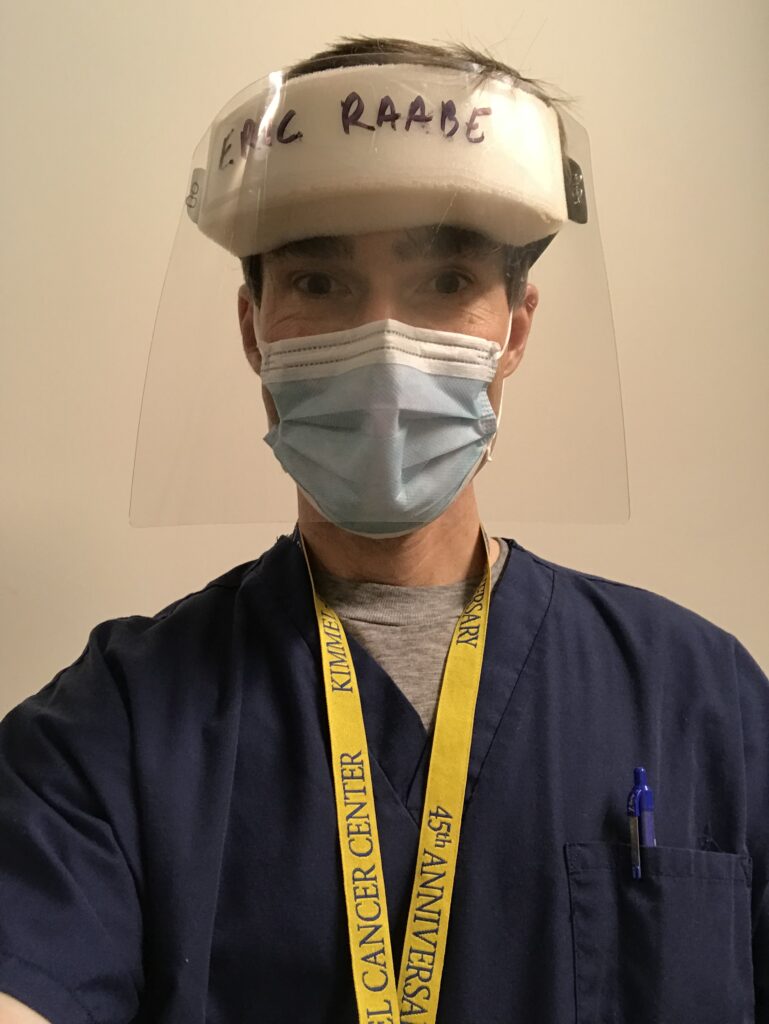
Dr. Eric Raabe
Join us as we follow the journey of Dr. Eric Raabe’s research, funded by the St. Baldrick’s Foundation Hero Fund, Hannah’s Heroes. From uncovering the activation of the mTOR pathway in pediatric low-grade gliomas, he went on to conduct successful preclinical studies showcasing the effectiveness of mTOR inhibitors in combination therapy. Now, his research is underpinning a clinical trial to assess the use of Everolimus in pediatric patients facing recurrent or worsening low-grade gliomas.
In 2014, we shared an update from Dr. Raabe, who at the time had identified pediatric low-grade gliomas as having activation of the mTOR pathway, and found a way to stop the mTOR pathway from working. When the mTOR pathway is turned on in cancers, including pediatric low-grade gliomas, it can lead to uncontrolled cell growth and tumor formation.
Targeting the mTOR pathway emerged as a promising strategy for cancer treatment.
Since then, Dr. Raabe has been hard at work to support clinical trials to target mTOR in pediatric low-grade gliomas.
Together with colleagues, he showed that blocking the pathway with another mTOR-targeting drug makes the tumor cells more sensitive to traditional chemotherapy.
This suggested the potential success in combination therapy.

This finding led him to combine both an mTOR inhibitor and a MAP kinase inhibitor to suppress tumor growth. “We also found that this combination suppressed the blood supply to the tumor as well,” he said. “This is important because tumors need a blood supply to grow, and by limiting blood vessel growth, we can potentially slow down or stop the growth of tumors and the fluid-filled cysts that cause many children with this type of tumor to lose their sight.”
The researchers have also identified some pathways that are becoming more active and may be contributing to tumor growth. They are currently investigating ways to target and block these pathways, which could potentially lead to new treatments for cancer.
This research, supported in part by St. Baldrick’s Foundation, provided the rationale for a clinical trial involving Everolimus, a drug targeting mTOR. This trial, conducted as the Phase II PNOC001 trial, aimed to evaluate Everolimus for children with recurrent or progressive low-grade glioma.
Everolimus was tolerated well by the patients and showed some promise in slowing down the progression of the tumors. However, researchers didn’t find a clear link between certain biological markers in the tumors and how well the treatment worked. They did discover that specific genetic changes in the tumors might predict how aggressive the tumor could be, which could help doctors plan better treatments in the future.
This research also supported a subsequent, currently active low-grade glioma clinical trial combining mTOR and MAP kinase drugs, Trametinib and Everolimus, to see if they can help treat brain tumors in children and young adults that have come back. The researchers think that using both drugs together might be more effective in treating both low-grade and high-grade brain tumors compared to using either drug alone. This Phase 1 clinical trial is trying to find out the best dose of these drugs and what side effects they might cause in these patients.

This journey is an example of how research often takes time, and it’s important to remember that every step forward brings us closer to new treatments and, ultimately, hope for kids with cancer.
Donate now and help support research into better treatments for kids with cancer.
Read more on the St. Baldrick’s blog:

 SBF
Tweets »
SBF
Tweets »